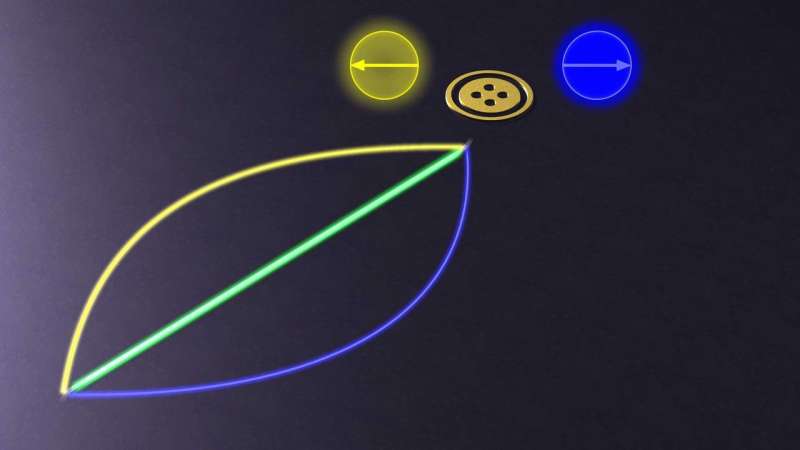Researchers take a step toward quantum mechanical analysis of plant metabolism

Hurricanes, traffic jams, demographic development – to predict the effect of such events, computer simulations are required. Many processes in nature, however, are so complicated that conventional computers fail. Quantum simulators may solve this problem. One of the basic phenomena in nature is the interaction between light and matter in photosynthesis. Physicists of Karlsruhe Institute of Technology (KIT) have now made a big step towards quantum mechanics understanding of plant metabolism. This is reported in the Nature Communications journal.
"A quantum simulator is the preliminary stage of a quantum computer. Contrary to a quantum computer, however, it is not able to make any calculations, but is designed for the solution of a certain problem," says Jochen Braumüller of KIT's Physikalisches Institut (Institute of Physics). As the high efficiency of photosynthesis cannot be understood completely with classical physical theories, researchers like Braumüller use a quantum model. Together with scientists of the Institut für Theoretische Festkörperphysik (TFP, Institute for Theoretical Solid-State Physics), he demonstrated for the first time in an experiment that quantum simulations of the interaction between light and matter work in principle.
The interaction between light and matter in photosynthesis can be described as an interaction of photons of light with the atoms of matter on the microscopic level. The high efficiency of this mechanism of nearly 100 percent suggests that it is subject to rules of quantum physics, which is difficult to simulate with classical computers and simple bits. In standard computing, information is represented by a switch that can store information as zero or one. Quantum bits, by contrast, are able to assume the states of zero and one at the same time according to quantum physics rules. Hence, quantum computers or the simpler quantum simulators can solve the problem more quickly and efficiently.
Braumüller and his co-authors have now developed one of the first functioning components for a quantum simulator of light-matter interaction: Superconducting circuits as quantum bits represent the atoms, while electromagnetic resonators represent the photons. The physicists succeeded in producing an effect with the quantum bit and the resonator assuming two opposite states at the same time. "Qubit and resonator are coupled," says Michael Marthaler of KIT's TFP. "This is also the reason for the exponentially improved calculation capacity compared to classical computers." Fulfilling of this fundamental principle of quantum mechanics has demonstrated feasibility of analog quantum simulation with superconducting circuits, the researchers say.
As a next step, they plan to extend their system via many other building blocks. "Classical simulation of this extended system would take longer than the age of the universe," says Martin Weides, who has been heading a working group at KIT's Physikalisches Institut since 2015. If the planned quantum mechanics simulation is successful, this will be a "milestone on the way towards a universal quantum computer."
More information: Jochen Braumüller et al. Analog quantum simulation of the Rabi model in the ultra-strong coupling regime, Nature Communications (2017). DOI: 10.1038/s41467-017-00894-w
Journal information: Nature Communications
Provided by Karlsruhe Institute of Technology




















